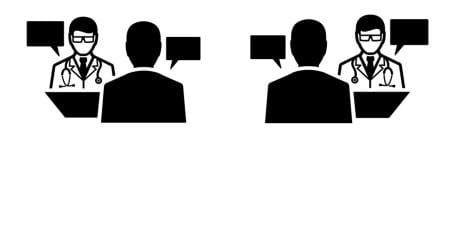Case
“I wonder if we’ll get any more flu patients today?” thought Melissa, a fourth-year medical student in the middle of her emergency medicine clerkship. The large urban medical center affiliated with her medical school had already admitted 34 cases of a variant strain of influenza in the last 2 days. Across the city an estimated 250 people had become ill during the past 2 weeks, with the mortality rate hovering just below 20 percent. In an effort to control the spread of the deadly virus, both the state public health department and local medical centers were cooperating with strict quarantine procedures for individuals exposed to known carriers. Local news stations encouraged people to remain home, while medical personnel with known patient exposure were restricted from leaving their hospital or clinic until after a 24-hour observation period. Although Melissa had not yet come in contact with anyone later determined to have an active infection, she couldn’t help but wonder about each new patient she examined.
Later that morning, Melissa’s supervising resident directed her to a patient complaining of persistent abdominal pain. “His symptoms don’t match with the flu,” she told Melissa, “so I don’t think you need the isolation mask and gown.”
Five minutes into the exam and history, Melissa could feel her pulse start to quicken. Mr. McIntyre may have come to the ER with abdominal pain, but now he was starting to complain of a headache and nausea accompanied by an elevated temperature of 100.2° that just 3 hours earlier had been 98.4°. Growing more and more nervous, Melissa immediately went to find Dr. Martin, her supervising resident.
“He was in the waiting room for how long?” Dr. Martin asked in despair, after the team promptly admitted Mr. McIntyre with what was determined to be another case of influenza. “Three hours? We’re going to have to quarantine everyone who was there!”
Accompanied by Dr. Walker, the attending physician for the team, Melissa and Dr. Martin made their way to the corner of the waiting room where the triage nurses had assembled the 12 people who had been exposed to Mr. McIntyre. After calmly explaining the situation and the necessary 24-hour quarantine, Dr. Walker asked if anyone had any questions.
“Yeah, I’ve got one,” a large man with a swath of bloody gauze wrapped around his forearm snarled belligerently. “I’ve been bleeding all over the floor for an hour and now you’re telling me I can’t leave? I only saw that sick guy for 5 minutes!”
“I’m sorry sir—” Dr. Walker began before he was cut off.
“I don’t believe this,” the man cut in. “This is such garbage. I’m supposed to be at my kid’s soccer game tonight and then I work the night shift. What do you want me to do about that?” he asked before stalking away towards the bathrooms.
Six hours later, as Melissa walked towards the cafeteria, she realized that Nick—she learned his name after spending half an hour stitching shut the cut on his arm—was following her, occasionally looking over his shoulder towards the triage station. “Excuse me,” he said quietly, glancing over his shoulder again. “I’m really sorry about before—I didn’t mean to get so upset. It’s just that I have so much to do today and I promised my son I’d make it to his game. I’ve…well, I’ve missed the last 3.”
“Oh, that’s okay,” Melissa said. “I can understand why you’d be upset.”
“But honestly, I don’t have that flu,” Nick replied. “I feel fine, I don’t have a fever or any of those other things they keep talking about on TV, and that sick guy went into the back right after I sat down. Seriously. Five minutes later. You were so nice about doing my stitches—can’t you help me out here? I really need to be at this game and I’ve been here for almost half the quarantine time. I could just walk out the side door and they’d never even notice I’m gone. Please don’t say anything,” he begged, glancing once more down the empty corridor and edging towards the door. “I’m fine, honest.”
Commentary 2
In this case scenario, Melissa confronts a fundamental ethical challenge facing clinicians in public health crises: being respectful of individual liberty while protecting the population from harm. The primary moral dilemma takes place when autonomous individuals want to act in ways that threaten people’s health. In this case, Nick wants to exercise his individual liberty to break quarantine, but, if he is allowed to leave the hospital, he may put the health of others at risk. The legal and moral duty to protect the public from harm trumps Nick’s individual liberty because of the significant potential threat he poses to the community’s health. However, it is important for Nick and others to understand why they are being asked to cooperate with public health measures such as quarantine and what the consequences may be if they are not compliant. Despite the ethical legitimacy of enforcing a quarantine, there are more nuanced aspects and moral dimensions to this case that are less clear-cut.
Proportions and Precautions
While it seems fairly certain in this case that the quarantine restrictions are not disproportionate to the threat being allayed, it may be that in other cases health measures are not proportionate responses to the risks. One criterion for assessing proportionate responses to health threats is the need for precaution in situations where there is a lack of good information with which to make decisions. It is important, therefore, that hospitals work closely with public health officials in times of crisis to ensure that everyone has accurate health information and that the least restrictive or coercive measures are employed when it comes to limiting individual liberty [1,2].
The precautionary principle justifies taking a course of action that errs on the side of caution and that may require health measures that are more restrictive of individual liberty than they actually need to be. While Melissa would not be personally responsible for determining what public health measures ought to be enacted, she does have a responsibility to pass along to hospital decision makers (and perhaps even to governmental health officials) any new information about the influenza patients that may be relevant to how the outbreak is handled. By doing so, she can help ensure that public health measures to contain and manage the outbreak are both proportionate to the threat the disease poses to the public’s health and that they reflect suitable precautions.
Considering Equity
Even if Melissa does have reason to believe that Nick’s case is special and that he is not at significant risk of spreading contagion to the community, she should consider whether allowing him to leave would be fair to the others who are currently in quarantine. The principle of equity is important in such a situation, and Melissa’s actions should preserve as many rights as possible for those in quarantine. While there may be unintended negative consequences for Nick if he has to remain in quarantine, it is arguably more important that citizens be treated equally in a public health crisis so that restrictions to individual liberty are not applied in a discriminatory manner. Equitable treatment is also vital because of the importance of solidarity—unequal treatment can undermine the sense of common purpose that is critical in managing a public health crisis.
In urgent situations, decisions have to be made that often result in collateral damage: imposition of a disproportionate burden on particular members of society, for example. In this case, those who are quarantined will bear some of that burden. As a result of being quarantined, Nick will disappoint his son and will likely lose wages. The moral duty of reciprocity requires that society support those who suffer such consequences as a result of measures designed to protect the public from harm. While Melissa alone cannot ensure that Nick recoups his financial losses, she could arrange for him to contact his family in order to explain why he will not be attending his son’s soccer game. Melissa could even volunteer to speak to his son to explain why his father is unable to attend. Though this is certainly beyond what is required of her, demonstrating compassion and understanding can help to ease the emotional burdens of those in quarantine. Nick’s behaviour suggests that it may be necessary for Melissa to involve hospital security or police, who can help to ensure that he does not leave the quarantine area. While this may require more restrictive or coercive measures, Melissa should remind herself that Nick’s compliance was originally requested on the same voluntary basis as everyone else’s.
Melissa may realize as the night wears on that she, too, is facing significant risk while discharging her duty to care. Perhaps she has a family at home who she fears will be put at risk because of her occupational exposure. Melissa ought to seek reassurance from her supervisors and from the hospital’s occupational health staff that everything is being done to make her working conditions and those of her fellow health care workers as safe as possible. This may mean providing access to masks, or perhaps the hospital ought to provide health care workers with antiviral medication for prophylaxis against the influenza. Hospitals and even governments have a responsibility to ensure that working conditions are safe for those who bear a disproportionate burden in discharging their professional obligations in a public health crisis [3].
Conclusions
This case appears straightforward at first, but there are many ethical issues embedded in a clinical scenario in which a significant threat to the public health emerges. While Melissa is not in a position to resolve every ethical problem raised by this case, she is in a position to advocate for Nick by seeing that the unintended negative consequences of his quarantine are mitigated. Furthermore, she can advocate for her own safety and for that of her colleagues. Finally, as a frontline health care worker, Melissa has a responsibility to keep hospital and public health decision makers apprised of any new and relevant information that can help promote a precautionary and proportionate response to the crisis.
References
- Gostin LO. Influenza pandemic preparedness: legal and ethical dimensions. Hastings Cent Rep. 2004;34(5):10-11.
- Upshur RE. Principles for the justification of public health intervention. Can J Public Health. 2002;93(2):101-103.
- Singer PA, Benetar SR, Bernstein M, et al. Ethics and SARS: lessons from Toronto. BMJ. 2003;327(7427):1342-1344.



